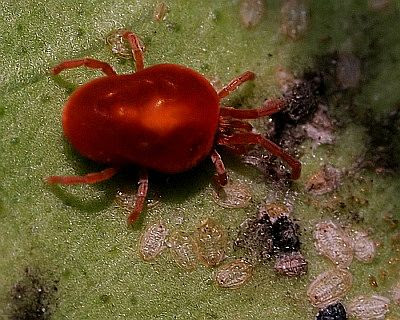 |
| How to control red spider mite on tomato plants |
The red spider mite - also known as the 'Two Spotted Spider Mite' - is one of those glasshouse pests that can be quite common on tomatoes grown under protections. Unfortunately it can also prove quite difficult to control.
 |
| How to control red spider mite on tomato plants |
Symptoms: The first sign of a red spider mite infestation are either small spider webs - often high up on the plant - or white speckling on the upper surface of the leaves. As the attack progresses, they take on a bronzed appearance and may wither and die. Fine webbing is produced, strung between parts of the plant or under the leaves. Using a magnifying glass the red spider mites and their eggs can be seen on the undersides of the leaves. In an unheated greenhouse the worst attacks occur from June to September, but red spider mites can be active year round. Serious damage to the plant is only done when population numbers dramatically increase resulting in leaf, flower and even fruit death.
Control: Spray plants with a fine mist of water, twice daily, as the spider mite can only thrive in hot dry conditions. Also try applying contact insecticides such as pyrethrum, derris or soft soap solutions as these are the best option for organic gardeners. They will need to be applied every 5-7 days during the summer on both the upper and lower sides of the leaves. Biological controls can be used safely 1-2 weeks after spraying with Derris, 4 days after pyrethrum and 1 day after soft soap sprays. For an effective home-made solution try making a rhubarb spray. It contains the toxin ‘oxalic acid’ which appears to suck the moisture out of them!
For related articles click onto the following links:
HOW TO CONTROL BLACKFLY ON TOMATO PLANTS
HOW TO CONTROL GREENHOUSE WHITEFLY ON TOMATO PLANTS
HOW TO CONTROL LEAF MINER ON TOMATO PLANTS
HOW TO CONTROL MOSAIC VIRUS ON TOMATOES
HOW TO CONTROL RED SPIDER MITE ON TOMATO PLANTS
How to Grow Giant Tomatoes
How to Prevent Spider Mites on Tomato Plants
ORGANIC CONTROL OF GREY MOULD ON TOMATO PLANTS







No comments:
Post a Comment